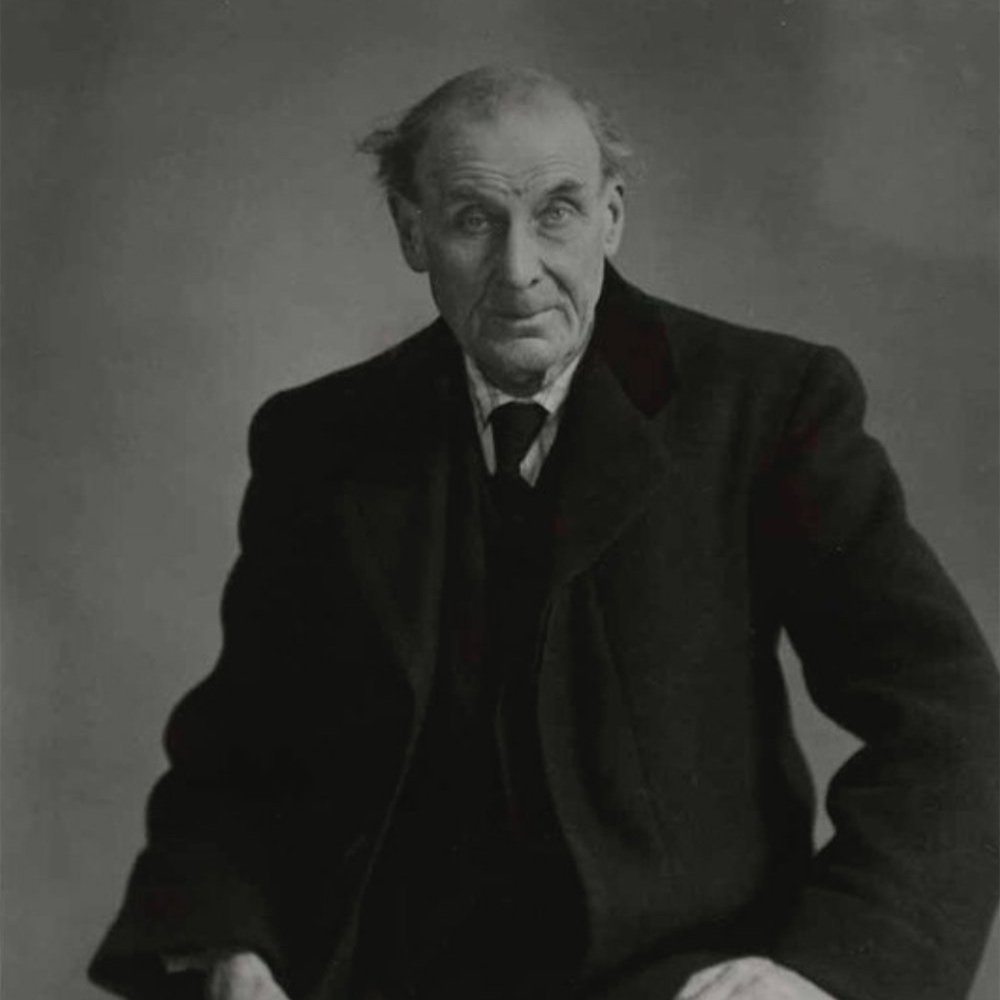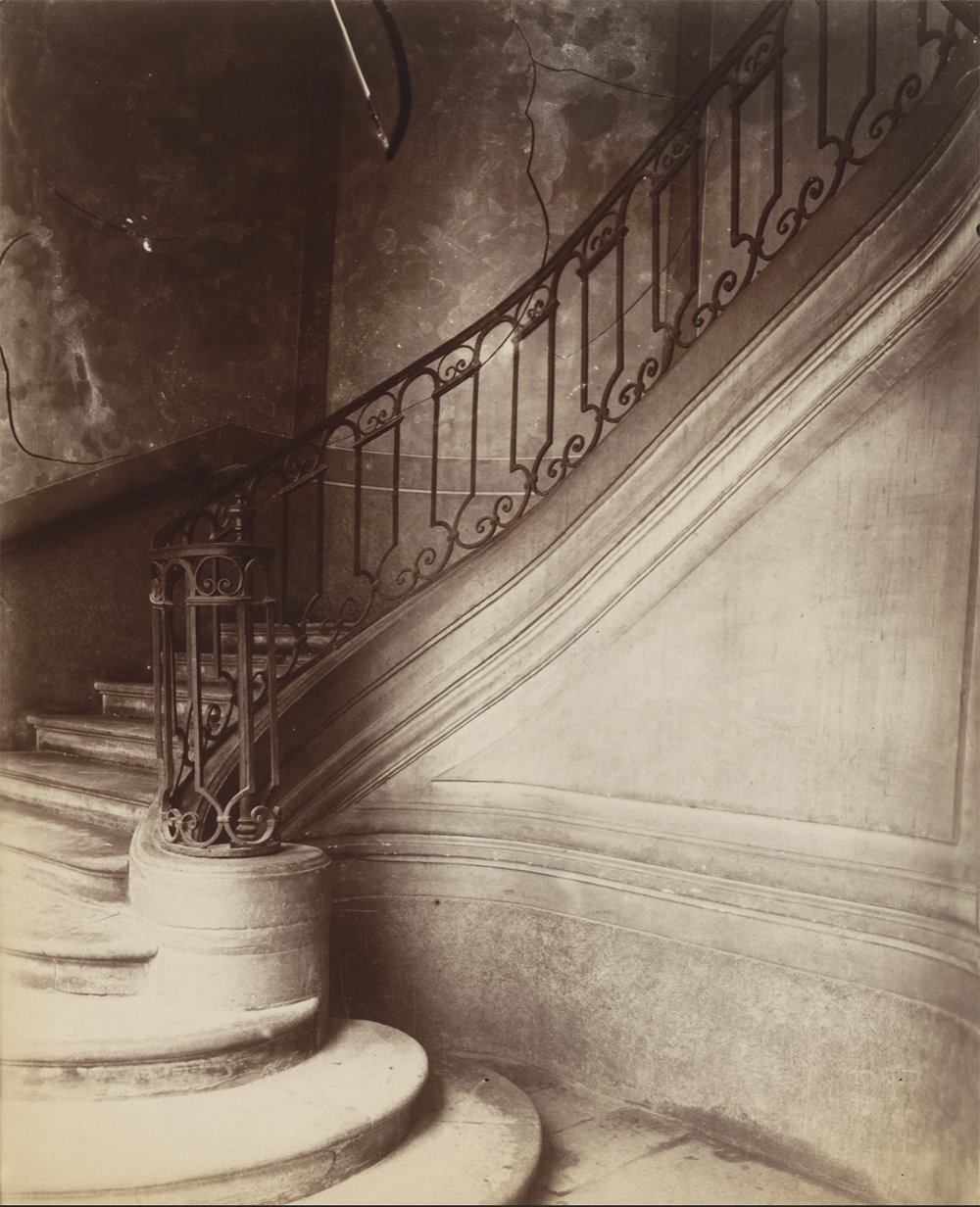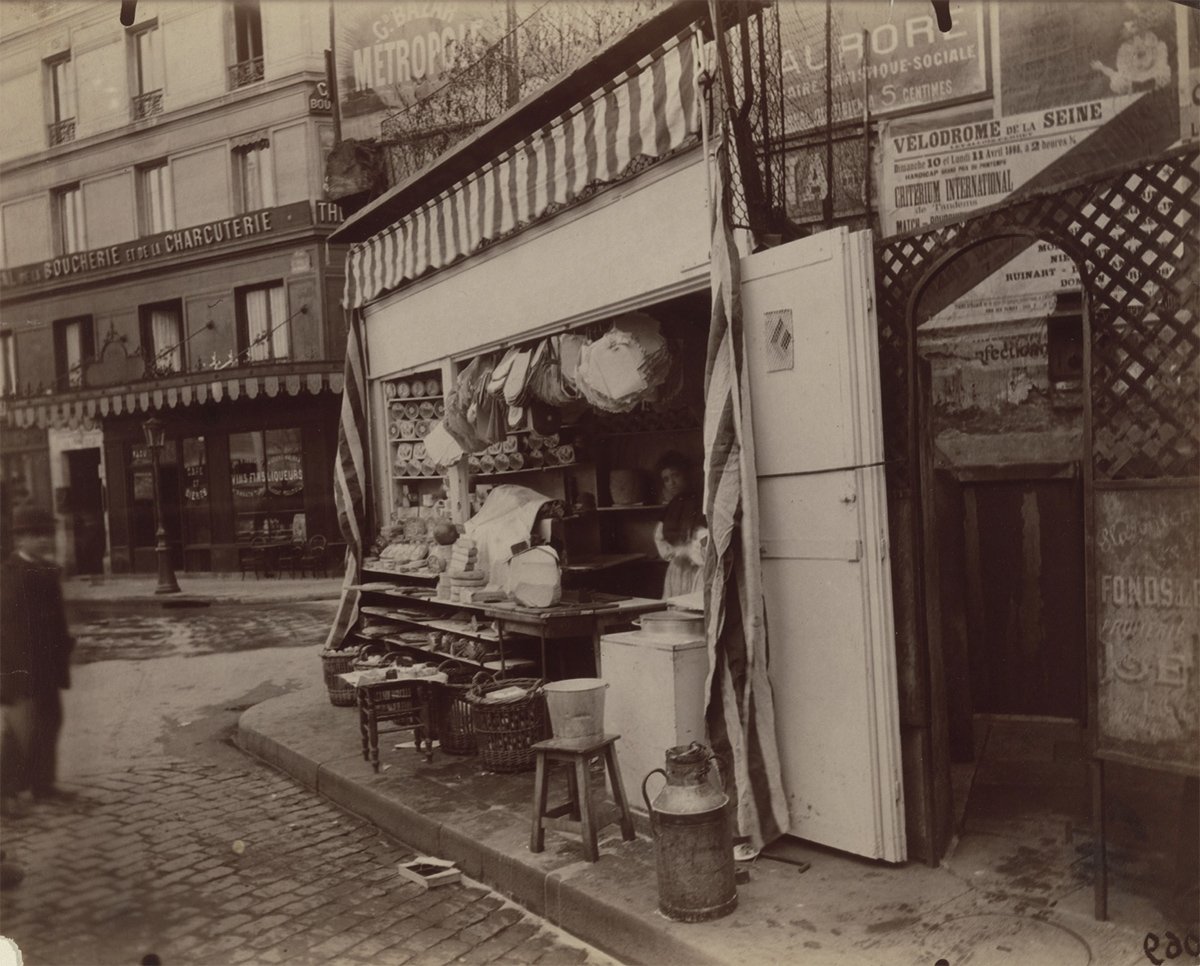Eugène Atget
Eugen Atget, Portrait 1927 by © Berenice-Abbott
Eugène Atget
(Francë 1857 - 1927)
Eugène Atget is a French photographer, known for photographing the architecture of old Paris in the end of 19th century and beginning of 20th century. Atget is considered a modernist documentary photographer, although his work was mostly appreciated after his death, when Berenice Abbott bought the archive of his negatives and made them known in America through publishing books and exhibitions. Atget began photographing in his late thirties, in the end of the 1880s, when photography was becoming popular as a result of advances in technology. His first subjects were floral motifs and rural scenes, as study figures for painters and illustrators. But in the late 1890s, his focus shifted to architecture and streets of Paris, and continue to be for the next 30 years. During this period Paris had gone drastic changes known as Haussmann’s modernization projects, that razed old quarters to make place for wide boulevards and new bourgeois buildings. This operation, which was initiated by Napoleon III and undertaken by George-Eugene Haussmann between 1853-1927, was not supported by many. In this climate, Atget takes an interest in photographing what was left of old Paris; streets, old buildings, doors, windows, storefronts, stairs, parks, and other artifacts. In his business card reads "Creator and Purveyor of a Collection of Photograph Views of Old Paris". His clients were architects, painters who wanted exemplars of old architecture for their works, institutions of archives, and individuals who sought to have photographs of old Paris.
Atget created an archive of 5,000 negatives and 10,000 prints, working on several photographic series, such as streets, houses, professions, parks. Throughout his life, he used the old technique of photographing with view camera on 18x24 cm negative glass, which gave the photographs a contemplative feeling. During his time, his work was not considered art, as it did not enter into the canons of traditional Pictorialism, nor he was following the path of surrealist and constructivists of the modernist movement. Instead, he considered himself a documentary photographer. His work caught the attention of surrealist Man Ray and his assistant Berenice Abbott, who frequently visited his studio in the last years of his life, and after his death in 1927 bought the archive of 1,000 negatives and 10,000 prints. Abbott worked tirelessly to make Atget known in America through writings, books and exhibitions. Eugèn Atget's work served as inspiration for a new generation of photographers, such as Walker Evans, Ansel Adams, to represent the ordinary facts of life with clarity of vision and sensibility.
15 Quai Bourbon 1900, © Eugene Atget
Rue Houtefeuille, 6th Arrondissement 1898 © Eugene Atget
Bon Marche © Eugene Atget
Avenue de l’Observatoire, © Eugene Atget
Cour 7 Rue de Valence 1922, © Eugene Atget
Hotel le Charron 1900, © Eugen Atget
Hotel de la Salamandre 1900, © Eugene Atget
Lion head knocker 1900, © Eugen Atget
Rue de la Montagne Sainte Genevieve 1898, © Eugene Atget
Untitled 1898, © Eugene Atget
Mitron 1899, © Eugene Atget
Marchand de paniers 1899, © Eugene Atget
Untitled 1900, © Eugene Atget
Rue de la Montagne Sainte Genevieve 1925, © Eugene Atget
Avenue des Gobelins 1927, © Eugene Atget
Pantheon Paris 1924, © Eugene Atget
Porte Cluny 1898, © Eugene Atget
Grand Trianon 1924 © Eugen Atget.
Trianon Pavillon Francais 1924, © Eugen Atget


























